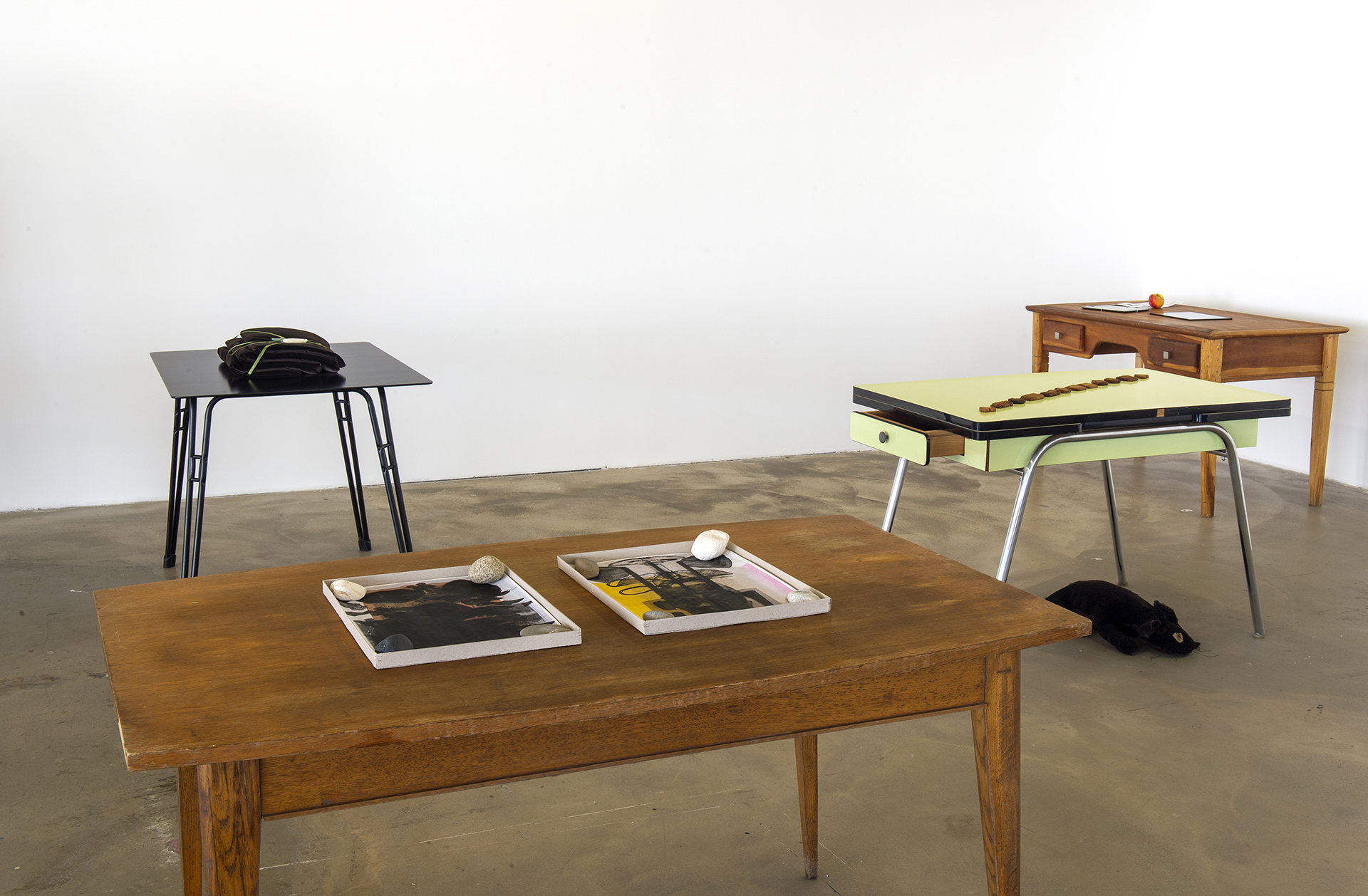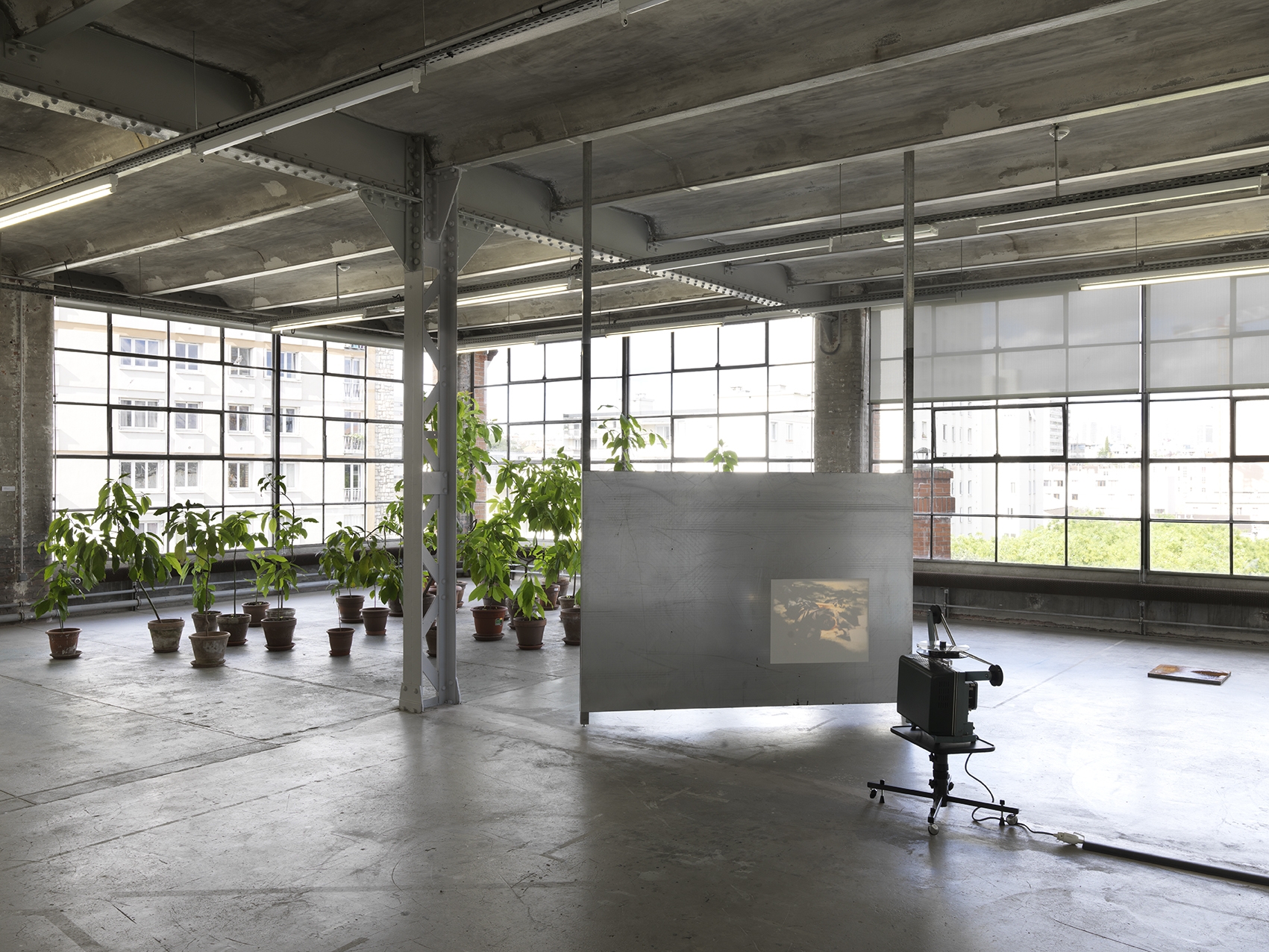Pour les pieuvres, les singes et les Hommes
Shimabuku

Erect, 2017 Film numérique, couleur, son. 5 min. 53 sec. ; en boucle. Reborn art festival, péninsule d’Oshika, Ishinomaki, Japon. © courtesy Shimabuku et Air de Paris, Paris

Exhibition view, Pour les pieuvres, les singes et les Hommes, Centre d’art contemporain d’Ivry-Le Crédac, 2018, © Shimabuku

Exhibition view, Pour les pieuvres, les singes et les Hommes, Centre d’art contemporain d’Ivry-Le Crédac, 2018, © Shimabuku

Exhibition view, Pour les pieuvres, les singes et les Hommes, Centre d’art contemporain d’Ivry-Le Crédac, 2018, © Shimabuku

Exhibition view, Pour les pieuvres, les singes et les Hommes, Centre d’art contemporain d’Ivry-Le Crédac, 2018, © Shimabuku

Exhibition view, Pour les pieuvres, les singes et les Hommes, Centre d’art contemporain d’Ivry-Le Crédac, 2018, © Shimabuku

Sculpture for Octopuses: Exploring for Their Favorite Colors (Sculpture pour pieuvres : à la recherche de leurs couleurs favorites), 2010 Billes en verre artisanales. © courtesy Shimabuku et Air de Paris, Paris

Exhibition view, Pour les pieuvres, les singes et les Hommes, Centre d’art contemporain d’Ivry-Le Crédac, 2018, © Shimabuku

The Snow Monkeys of Texas - Snow Monkey Stance (Les singes des neiges du Texas – La posture du singe des neiges), 2016 Impression numérique sur papier Hahnemühle, contrecollage aluminium, cadre en bois © courtesy Shimabuku et Air de Paris, Paris









« The real world is not an object - it is a process. »
John Cage
John Cage’s thinking has profoundly influenced and moved a whole generation of artists and has participated in defining conceptual art. In the exhibition tout le monde in 2015, we presented a work by William Anastasi entitled Sink (1963-2010). This work, a square steel plate of 50 cm wide and 2 cm thick, was given by Anastasi to John Cage for his birthday, with the protocol of putting water on its surface every day until his death. Gradually, rust would alter and erode the steel plate.
Introducing living things into art is a way of anchoring creation in the real world, which is “not an object”. Shimabuku’s work began in the 1990s and followed the work of Joseph Beuys or Jannis Kounellis, who in Europe introduced live animals in art in the 1960s and 1970s, or Ágnes Dénes, on the American continent, who placed the protection of the environment at the centre of her actions, or Robert Smithson concerned about the idea of entropy and growing disorder.
“To discover the meaning that circulates among things, between what composes them and what they compose, in us, outside us, with or without us […].” 1 This is the promise of Shimabuku’s work, who, by choosing the unpredictable as to the final form that his work will take, defines the process as a priority over the formal result. Meticulously produced and documented, his sculptural works, writings and photographs, videos and performances, articulated together or separately, reveal the modalities of their design and the important part left to chance. The works produced by Shimabuku are based on a profound attention to his environment, to Japan where he lives and works, but also to the different contexts in which he is invited to exhibit.
Shimabuku’s actions are positive. These are gestures of care, offering, and sometimes even reconstruction, which are not without evoking kintsugi, a traditional Japanese technique known since the 15th century, which consists in restoring ceramics or porcelains with gold or silver. These scars thus sublimate the accidents that have punctuated the life of objects. In the larger room, through an action he carried out on the Japanese coast, Shimabuku straightens up the landscape after it has been devastated. He creates a conversation between the film of this action, Erect and fragments of two houses destroyed in July in the Gagarin social housing estate in Ivry-sur-Seine. Where Robert Smithson’s Upside Down Tree (1969) was a transcendental gesture (which consisted in replanting a tree in the ground with the roots towards the sky), Shimabuku sets up the possibility of a second life.
Concern about climate change and the need to become aware of our natural environment remind us of the fragility of ecosystems. Also the question of the living world and of animism is central today and regularly finds its place at the heart of the Crédac project. Mathieu Mercier had made in 2012 Untitled (couple of axolotls), a kind of diorama, at the crossroads of the vivarium and aquarium, which raised the question of the evolution of species; in 2015 we invited Michel Blazy to showcase his collection of avocado trees (started in 1997) in the collective exhibition tout le monde. In 2017, Nina Canell introduced slugs into the heart of one of her installations made of “disarmed” electrical cabinets, for her solo show.
Since the 1990s, Shimabuku has been one of the most recognized among this generation of artists interested by the living and animism. For him as for Pierre Huyghe, Tomás Saraceno or Nina Canell, the exhibition space has been transformed into a refuge for a new ecosystem of organisms.
Claire Le Restif
Video(s)
Exhibition film directed by Thomas James. © Le Crédac, 2018.
Documents
Artist biography
-
Shimabuku was born in 1969 in Kobe, Japan and lives on the island of Okinawa.
His first solo exhibition was organized in 2001 at the Dia Center for the Arts in New York. Recent exhibitions :
2021 - The 165-meter mermaid and other stories, NMNM. Nouveau Musée National de Monaco – Villa Paloma (cur. Célia Bernasconi).
2019 - Wiels, Brussels (cur. Zoé Gray); OGR, Turin (cur. Fawz Kabra).
2018 - Bow to Bow, Amanda Wilkinson, London; Eyes On Shimabuku, Denver Art Museum, Denver.
2017 - Bow to Bow, Barbara Wien Gallery, Berlin.
2016 - The Snow Monkeys of Texas, Freedman Fitzpatrick, Los Angeles; Cuban Samba, Nogueras Blanchard, Madrid.
2015 - Exchange A Mobile Phone for A Stone Tool, Wilkinson Gallery, London.
Partnerships
The exhibition is produced with the support and complicity of Air de Paris, Paris.
This exhibition is part of the event Plein Soleil 2019, l’été des centres d’art, a project of d.c.a, l’Association française de développement des centres d’art contemporain.
Sponsoring for the opening : Grolsch, Les Nouveaux Robinson

